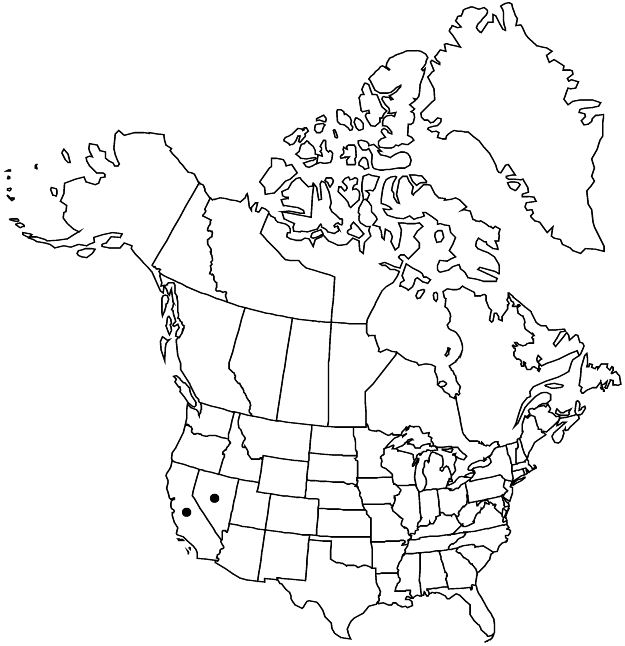Mentzelia nitens
Fl. Francisc., 234. 1891.
Plants candelabra-form, 5–20(–35) cm. Basal leaves persisting; petiole present or absent; blade lanceolate to linear, margins usually deeply to shallowly lobed, rarely entire. Cauline leaves: petiole absent; blade ovate-lanceolate to linear, to 15 cm, margins deeply to shallowly lobed or entire. Bracts green, lanceolate, 4.5–8.3 × 1.2–3.6 mm, width 1/5–1/2 length, not concealing capsule, margins entire. Flowers: sepals 3–8 mm; petals yellow to orange proximally, yellow distally, (7–)8–18 mm, apex rounded or acute apex; stamens 20+, 3–8 mm, filaments monomorphic, filiform, unlobed; styles 4–8 mm. Capsules clavate, 13–26 × 2–3.5 mm, axillary curved to 180° at maturity, usually inconspicuously longitudinally ribbed. Seeds 15–40, in 2+ rows distal to mid fruit, tan, usually dark-mottled, usually irregularly polygonal, occasionally triangular prisms proximal to mid fruit, surface colliculate under 10x magnification; recurved flap over hilum usually present; seed coat cell outer periclinal wall domed, domes on seed edges less than 1/2 as tall as wide at maturity. 2n = 18.
Phenology: Flowering Apr–Jun.
Habitat: Sandy washes, rocky slopes, desert scrub.
Elevation: 400–2000 m.
Discussion
Mentzelia nitens is similar to both M. eremophila and M. jonesii but exhibits little distributional overlap with either species. See 71. M. eremophila and 73. M. jonesii for discussion of similarities. Reports of M. nitens from Arizona are based on specimens treated here as M. jonesii.
Selected References
None.
